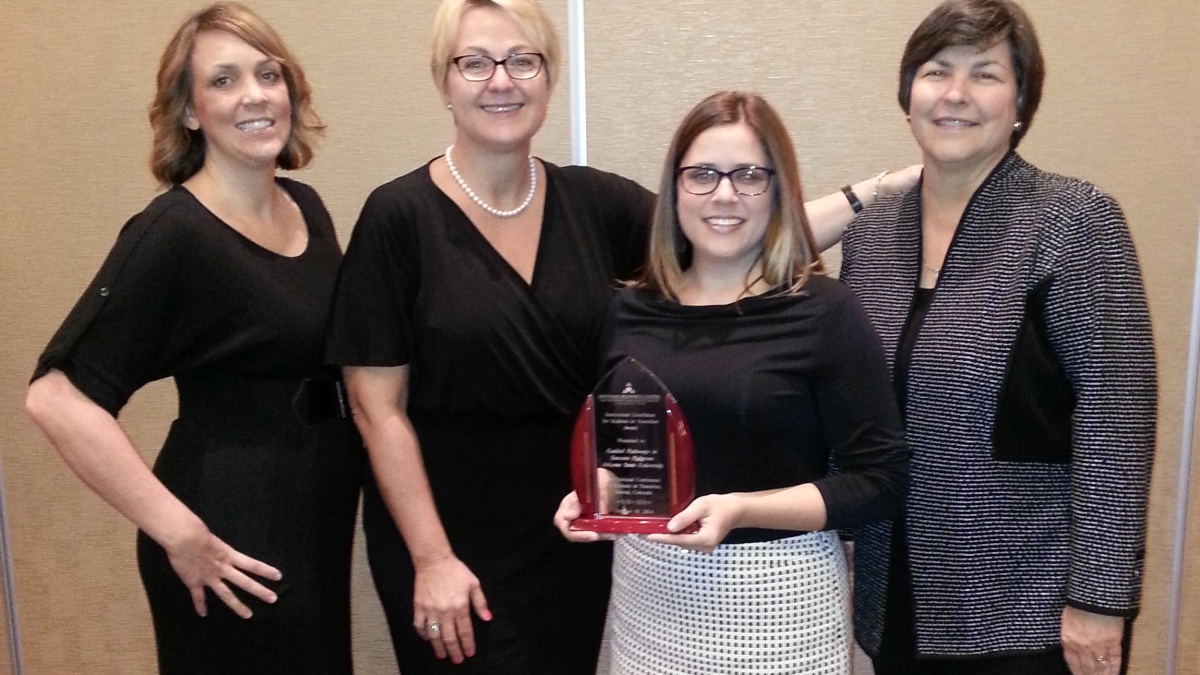New model of support gives transfer students a leg up

ASU lauded for transfer pathways program
For an increasing number of students in the United States, the journey to a bachelor's degree often begins at a community college. But how successfully these students find their way to a four-year institution is highly dependent on a culture of support – one that is thriving at Arizona State University.
Recognized as a leader in improving the success of transfer students, ASU has received the Inaugural Institutional Excellence for Students in Transition Award, given by the National Resource Center for the First Year Experience and Students in Transition.
“ASU is truly honored to be acknowledged for the work done on behalf of transfer students and our community college partners,” said Kelly Robles, senior director of Community College Relations. “To be the first recipient of such an award solidifies the fact that ASU is leading the way for transfer student success.”
To be presented annually to institutions that have designed and implemented outstanding collaborative initiatives that enhance significant transitions during the undergraduate experience, the award recognizes successful initiatives, such as ASU’s transfer pathways program, that support student learning and development at a variety of transition points beyond the first college year.
Creating a 'culture of transfer'
Better connecting transfer students to a host of support services – and, ultimately, a four-year degree – ASU undertook a broad-reaching and comprehensive plan for reform and improvement, says Maria Hesse, vice provost for academic partnerships at ASU.
“The goal put forth by ASU’s President Michael Crow was straightforward, but not simple,” Hesse said. “To increase the numbers of students who are 1) transferring from Arizona community colleges to ASU, 2) preparing for success in their desired majors and 3) completing their associate’s and bachelor’s degrees, while reducing time and costs.”
Hesse started by visiting every community college president in the state and asking for their ideas about how to improve transfer student success. With the stated purpose to “create a culture of transfer,” ASU and the colleges began a partnership.
Transfer specialists were hired and deployed; transfer orientations and peer mentoring programs were created; and faculty conversations series, newsletters and publications were developed – all to create a transfer process that was clear and seamless.
The university employed the very successful ASU eAdvisor concepts as the basis for the transfer pathways program, with terms such as “major map” to describe the sequenced curricular pathway to degree completion. Playing off of that theme, Hesse says, ASU developed MAPP (Maricopa to ASU Pathways Program) with the Maricopa Community Colleges, in addition to the TAG (Transfer Admission Guarantee) program, which is offered at other community colleges throughout the state.
The Guided Pathways to Success (GPS) program, which includes MAPP and TAG, has benefits for all parties involved, Hesse says. It helps the community colleges with their degree completion initiatives because the pathways build in a completed associate’s degree. It helps the university because the program incents students to come academically prepared for success in their major and thus students are more likely to persist to bachelor’s degree completion.
Most of all, it helps students because the program is designed around student success data and provides incentives for completing major milestones along the route to success.
Pathways to success
All pathways are available on the ASU transfer student website – transfer.asu.edu.
Interested students sign up for a pathway with their community college adviser. The names and other information about those students who sign up are transmitted to ASU each week, and that starts a flow of communication from the university to the student.
To encourage student participation in the pathways, benefits for students are tied into the program, including guaranteed admission to a specific ASU degree program, reduced tuition for Arizona residents, and access to ASU transfer advising and other pre-enrollment services while students are at the community college.
ASU has also built a number of online, self-service tools to help students and community college advisers with the transfer process. The goal was to provide forward-facing, self-service tools to guide and personalize the transfer experience.
“There are no easy fixes to the challenges of supporting transfer students before, during and after their transition from the community college to the university,” Hesse says. “But I am proud to say that ASU, in collaboration with our community college partners, has made significant progress in Arizona’s ongoing reform and improvement initiative.”
Leona Morales
602-496-1381
Office of Academic Partnerships